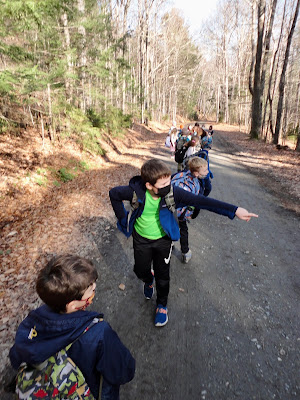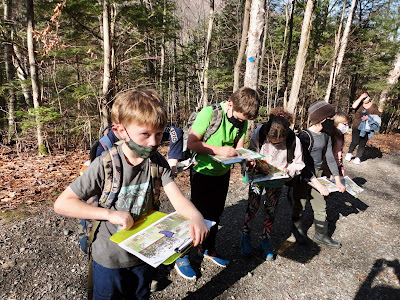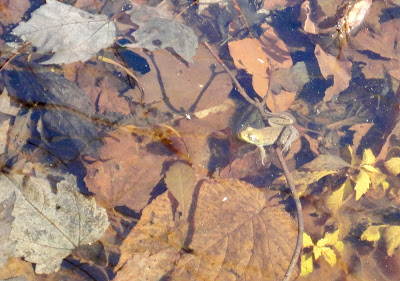 We began the week with a mini unit on the democratic election process. Students watched a video which defined the election process and highlighted several key vocabulary words. you can view it here if you are interested. On Monday we listened to a read aloud called Duck for President, by Doreen Cronin. During our Google Meet on Wednesday, students listened to Grace for President by Kelly Dipucchio
We began the week with a mini unit on the democratic election process. Students watched a video which defined the election process and highlighted several key vocabulary words. you can view it here if you are interested. On Monday we listened to a read aloud called Duck for President, by Doreen Cronin. During our Google Meet on Wednesday, students listened to Grace for President by Kelly DipucchioOur first reading goal is 8000 minutes. We are currently just over 2000. Please remind your students to fill out their reading logs and include their minutes read so we can reach our first goal! Third graders should be reading a minimum of 30 minutes 3 times per week, second graders should read a minimum of 20 minutes 3 times per week, and first graders should read 10 minutes 3 times per week.
During writer's workshop we learned how writer's go back to add more and more to their stories to make them even better. Students are encouraged to add descriptive language that speaks to our senses just as our mentor authors do.
I continue to assess students reading levels. This is a lengthy process, but provides valuable information.
In math:
First grade worked on composing 8, 9, and 10 using a number bond model and then writing two expressions using the commutative property.
Second grade finish their first unit, which concluded with taking from 10 within 100. In this unit we have been working on building fluency with addition and subtraction within 100 by converting a problem into another problem by decomposing to find a 10. Students build mathematical flexibility and understand the composition of numbers when they are able to manipulate the problem into a more "friendly" equation to solve it. There continues to be some confusion around this process, and I would encourage you to watch this video to understand more about this process who you can better support your child. Though the module is over, I don't feel the students are quite ready to move on.
Third grade used arrays and skip counting to solve multiplication problems and show the commutative property of multiplication. We began with an array and then applied the skip count to each row. Later we began with a skip count and built an array. We are using this pictorial approach to help build a conceptual understand of multiplication.
In Science this week we began our first unit on Heredity and Traits. Students discovered how scientists examine the traits of various fossils to determine the type of animals and the habitat that may have existed in the past.
On Friday we took advantage of the beautiful weather and set out of Elmore State Park where students looked for various habitats present in our area. We stopped at the pavillion where we played a field game, ate snack, and read the book Over and Under the Pond by Kate Messner. Students used a field guide to potentially identify various animals and plants present along our hike. We identified several habitats to include: lake, forest, meadow, march, pond, and streams. We hiked to a pond. Along the way we saw several plants and trees, as well as various birds including a pair of woodpeckers which let us watch them for several minutes. At the pond we discovered a beaver lodge and dam as well as fresh evidence of beaver activity. We found many freshly cut trees and a worn path leading to the beaver dam. Students also discovered a small frog in a pool of water near the edge of the pond.
Students were encouraged to tune into their senses as they completed a sensory nature scavenger hunt as we hiked back to school. Back at school students reflected on what they saw, heard, felt, and smelled. Then they explored an artifact they brought back with them with a magnifying glass, and worked to draw a magnified portion of their artifact.
This is experiential learning at it's best and is what I love the most about teaching. Students were in the element and expressed so much excitement and pleasure throughout the day. I would like to revisit the pond again later in the school year to note any changes. Here are some photographs from our adventure. Scroll all the way down for announcements!
 |
| Students playing Salmon, Bear, Mosquito |
 |
| Students discovered many things along our hike! |
 |
| Student study their field guide to identify various plant and animals. |
 |
| We crossed over several streams in our way. |
 |
| We found a Beaver Lodge at the pond! (notice the slushy surface from the recent snow) |
 |
| Check out this freshly cut tree! A sure sign of Beaver activity. |
 |
| This log made a great opportunity to practice some balancing skills! |
 |
| a small frog was basking in the warm sun! |
 |
| Taking a much needed break! |
Announcements:
- Students need sneakers for PE on Tuesday and Thursday!
- Library is Monday!
- Book orders are Due on Thursday Nov. 12th. You can order online at Scholastic Books. Class code is JG8W3
- There is NO SCHOOL Wednesday, NOV. 11th so there will be no remote learning assignments. There will be regular nightly homework on Tuesday. Students can choose to do it on Tuesday night or Wednesday.
- The first marking period ends on Wednesday, Nov. 18th.
- Early Dismissal Friday Nov. 20th. Pick up between 12 and 12:15.
- Thanksgiving break is Nov. 25 - 27.







No comments:
Post a Comment